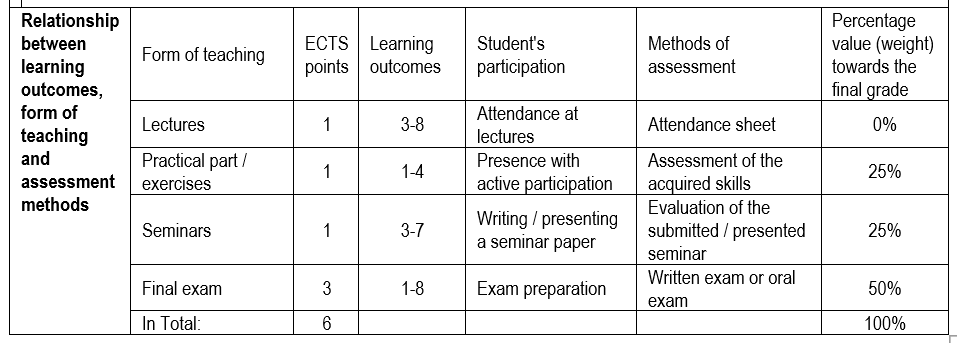The course teaches students how to approach a patient, communicate, and use self-reported clinical signs and symptoms in diagnosing the health condition of the orofacial region.
Introduction to propedeutics
Workplace, equipment and instruments for conducting a dental examination
Dentist protection measures while working with patients
Dry work area
Infection control in the dental office
Health questionnaire
Symptoms and signs of health conditions of the orofacial region
Anamnesis
Importance of drugs in oral diagnostics
Fundamentals of clinical dental examination
Examination of the mucous membranes of the oral cavity, salivary glands and lymph nodes
Periodontal examination
Examination of teeth
Occlusion examination
Examination of the edentulous alveolar ridge
Examination of the jaw joint
Assessment of orofacial functions and parafunctions
Examination of perioral tissues
Examination of orofacial muscles
Measurement of orofacial pain
List of problems, differential diagnosis and judgment of the main diagnosis
International Classification of Diseases
Imaging diagnostic methods of the orofacial region
Studio models
Communication with the patient and accompanying persons
Specifics of approach to patients of different developmental and life ages
Specifics of propaedeutics and diagnostics of various specialist dental branches
Additional examinations at the dental patient and related medical specialties
Writing clinical examination findings, admission and discharge letters
Writing a treatment plan
Informed consent to treatment and refusal of treatment
Required course materials:
1.Topić B., Tahmišćija H. Stomatološka propedeutika, Stomatološki fakultet Univerziteta u Sarajevu, Sarajevo - Zagreb, 2002
Upon completion of this course, students will be able to:
- Handle the equipment of the surgery and the instruments for performing the examination of the oral cavity and teeth.
- Perform a clinical dental examination of specific structures (mucous membranes of the oral cavity, periodontium, teeth, occlusions, edentulous alveolar ridge, jaw joint, orofacial functions, perioral tissues and orofacial muscles)
- Identify signs of health conditions of the orofacial region
- Critically evaluate the symptoms of the orofacial region that patients report with a possible medical condition
- Arguably comment on the International Classification of Diseases
- Compare imaging diagnostic methods of the orofacial region
- Associate the type of study model with its purpose
- Choose an appropriate way of communication with patients of different developmental and age ages and accompanying persons



